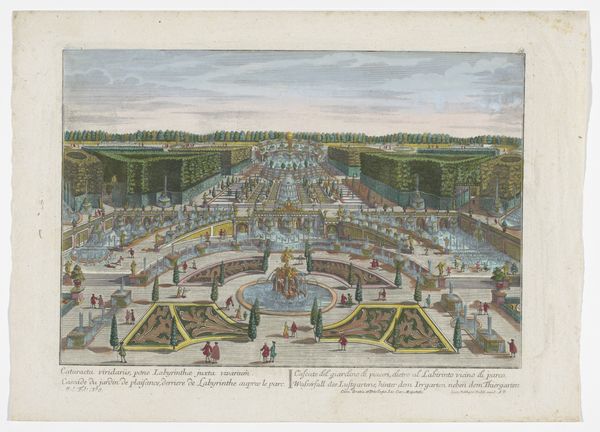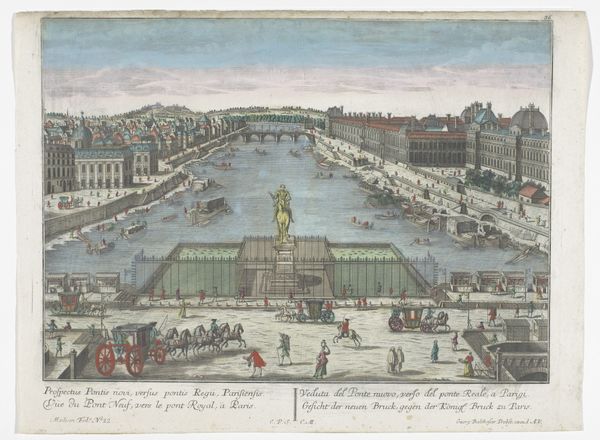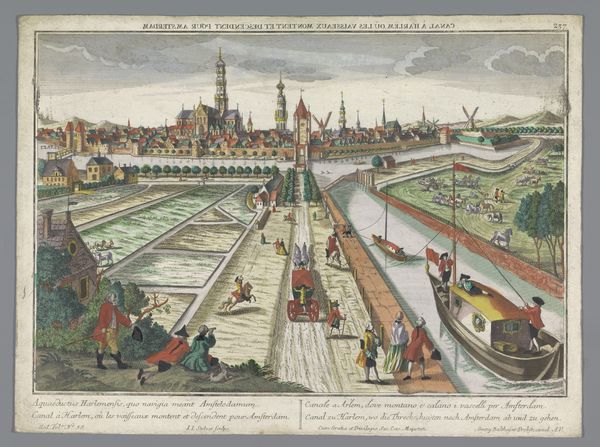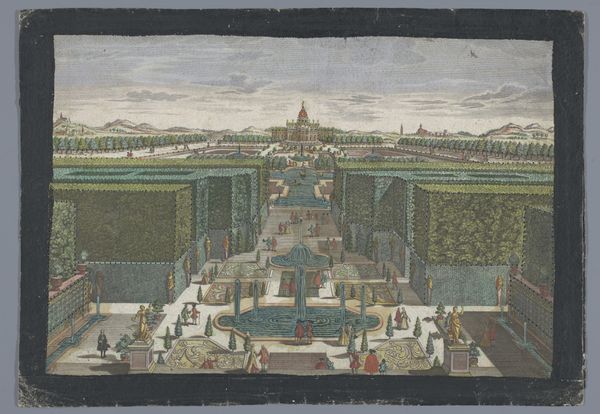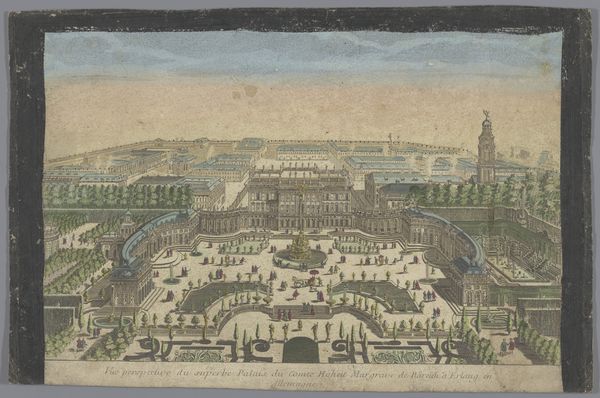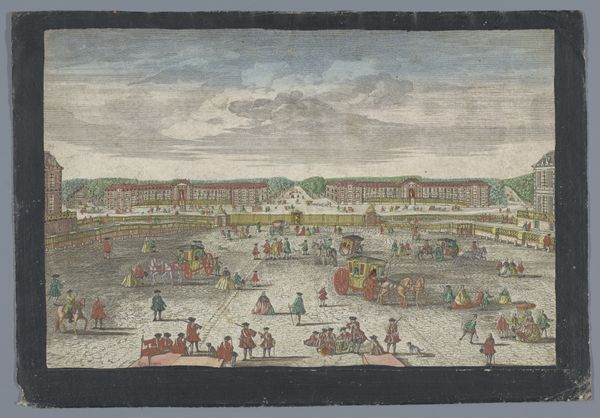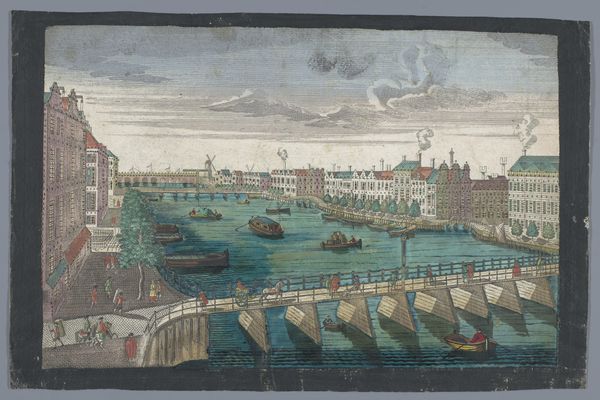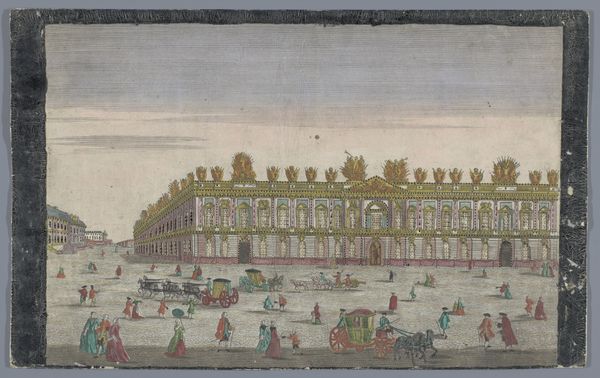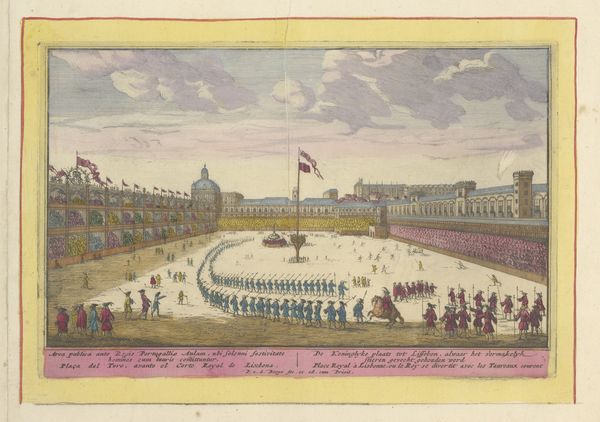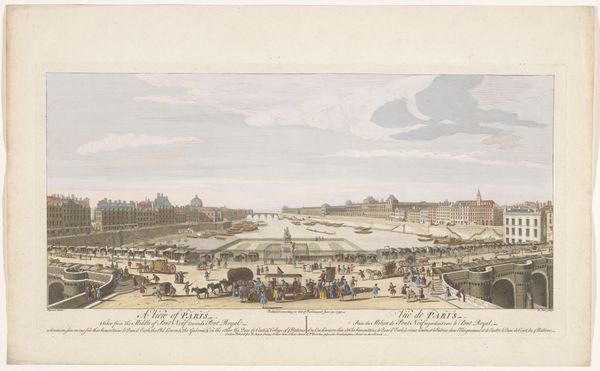
Gezicht op de Pont Neuf over de rivier de Seine te Parijs, gezien richting de Pont Royal 1742 - 1801
0:00
0:00
georgbalthasarprobst
Rijksmuseum
Dimensions: height 298 mm, width 452 mm
Copyright: Rijks Museum: Open Domain
Curator: Georg Balthasar Probst gifts us this charming cityscape, "Gezicht op de Pont Neuf over de rivier de Seine te Parijs, gezien richting de Pont Royal," likely created between 1742 and 1801. It employs etching, watercolor, and print techniques to depict a bustling Parisian scene. Editor: Wow, it's like stepping back in time! So detailed, almost miniature. There's a hazy dreaminess to the colors, makes it feel a little…melancholy? Like looking at a beautiful memory. Curator: Indeed. Consider the placement of the Pont Neuf; it wasn't just a bridge, but a stage for commerce and social interaction. The print reflects baroque ideals, celebrating urban development and royal power. Note also how the figure on horseback in the middle distances is reminiscent of Louis XIV who shaped Paris. Editor: I am fascinated by how the little boats are positioned on the river. Like each one is a tiny floating stage carrying its own story. So many characters! Is it me, or does everyone look like they’re heading somewhere important, but maybe it's just the impression one wants to make... like, social performance and capital? Curator: Precisely! Gender is central, observe how ladies in their beautiful robes are highlighted across different points of the image. This era was concerned with the construction and performance of gender, evident in fashion, leisure, and public space. This wasn't merely documentation; it was also social commentary. Editor: Hmmm...it does prompt the question, who are we *not* seeing here? The ones not invited to the party, or airbrushed out, and how is that reflected? I suppose this idyllic version papers over many social stratifications. Curator: Your intuition highlights an essential critique. What appears picturesque for some obscures systemic inequalities. These prints shaped narratives of progress, which, then as now, should invite deep and rigorous interrogation regarding inclusivity. Editor: Absolutely! I wonder what Probst himself thought. As a creative interpretation, this etching leaves space to contemplate, how far, really, have we moved beyond those constraints and expectations, or are we merely restaging them? Curator: Exactly. A powerful reminder that representations of the past can serve to illuminate the complexities of the present.
Comments
No comments
Be the first to comment and join the conversation on the ultimate creative platform.
